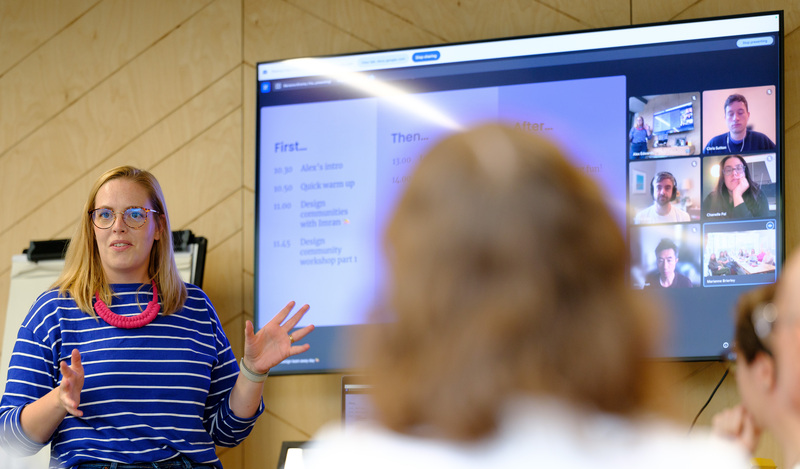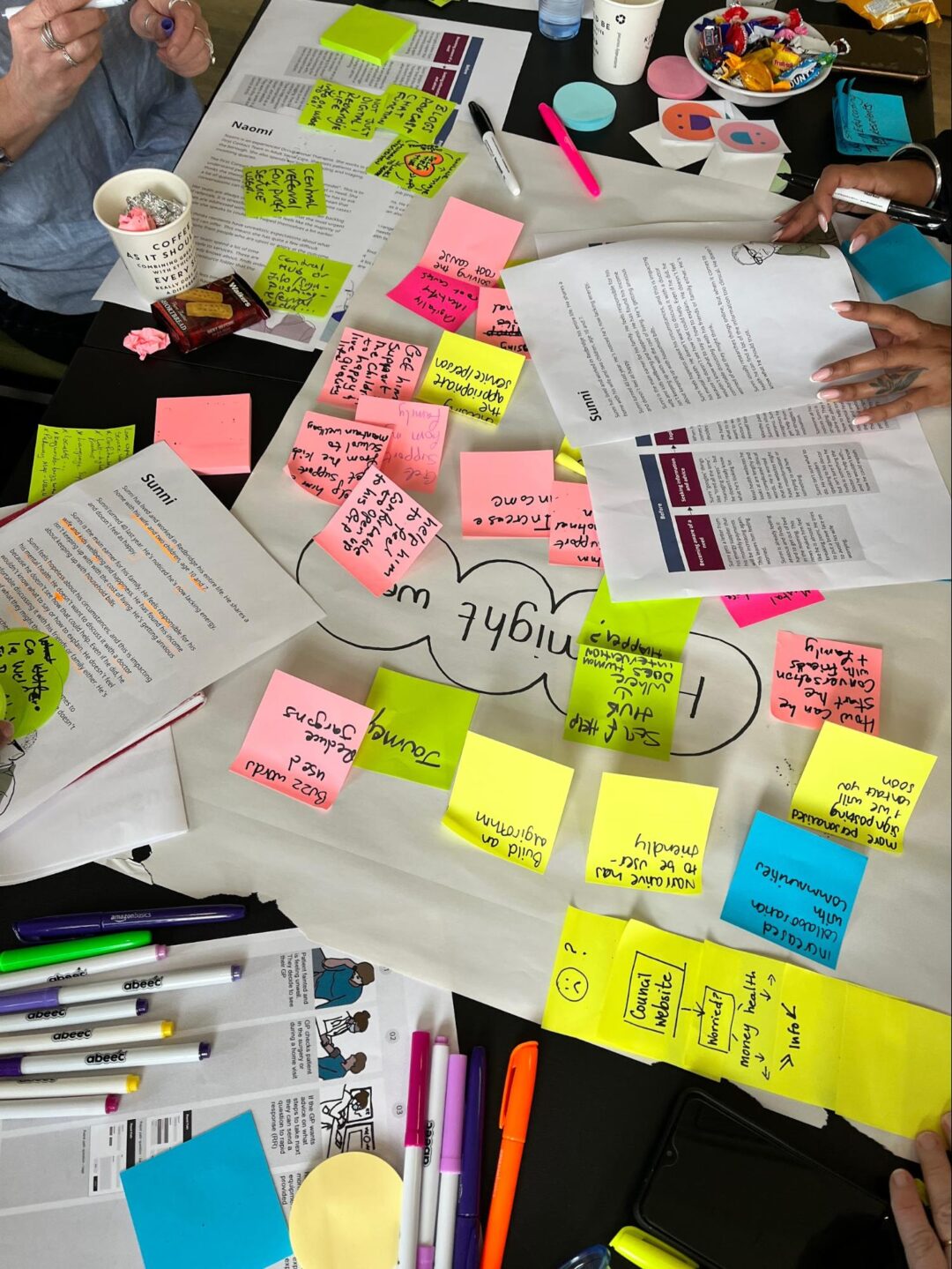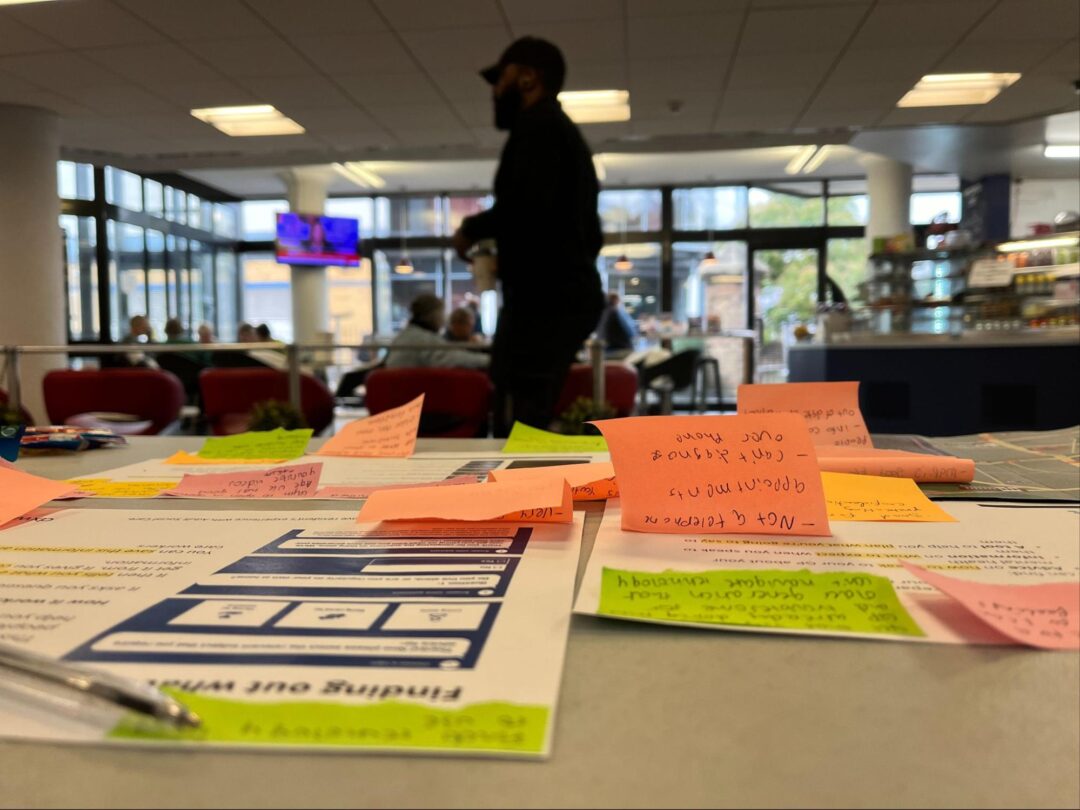From ideals to realities: navigating complexities in adult social care

We helped Redbridge Council involve communities in developing a solution to improve access to Adult Social Care
We worked with Redbridge Council to improve awareness and access to their Adult Social Care services. The project, which has been shortlisted for the customer experience award, aimed to free up time for the First Contact Team to focus on people with more complex or urgent social care needs.
Redbridge also wanted the service to better reflect the borough’s diverse population. Early on, we saw that working directly with a broad range of residents would help us understand access barriers for different groups.
To secure funding for the next phase of the project, we had 12 weeks to:
- engage with residents
- understand barriers to access
- propose solutions
The tension between agile and ideal methodologies
We initially thought about building a co-design community for the Council to consult with (following KA McKercher’s approach in their book Beyond Sticky Notes). But setting up research with marginalised groups or dedicated community groups can take time, in particular to:
- establish good communication with group members
- make sure the group is sustainable, funded and supported
Due to our short timescale, it was clear that following the perfect co-design methodology wasn’t practical. However, we didn’t want to abandon the concept completely and risk the solution not being fit for purpose. This meant we had to rethink and focus on what we could do in the time available.
In 12 weeks, a small team from Redbridge and dxw:
- shadowed the First Contact Team to understand referral processes
- held workshops with the First Contact Team to learn how residents use the service
- visited community locations to see where people might find adult social care information
- conducted pop-up research to gauge public awareness of adult social care
- consulted council members, GPs, and community groups
- generated ideas with the public through pop-up research at the library
- explored potential solutions in a design workshop with 25 people who deliver services in the borough

A truly multidisciplinary team
A constant throughout this work was the need for our team to be flexible and adaptable. We experienced changing deadlines and changing team availability. We also had to regularly adjust plans to accommodate engaging with stakeholders when they became available at short notice.
Working collaboratively as a multidisciplinary team made this easier. Whether we were Researchers, Service Designers, Delivery Leads, or Interns, everyone contributed where needed. Job titles didn’t become blockers to getting things done.
This worked because we:
- built trust in each other’s skills by working openly
- created a safe environment for sharing and feedback, so people could ask for help
- valued progress over perfection
Supporting more equal participation
We opted to run “pop up” research to ensure we heard from a broader range of voices in the borough. This meant:
- shorter time commitments from the public
- low effort activities to capture feedback
- insights and ideas to complement in-depth interviews and workshops
We made sure any written material was translated into the top 3 languages for the borough. We created posters and offered people different ways to participate. This included using:
- dot stickers so people could mark where they go for information and support without needing to speak to us
- suggestion boxes to capture people’s feedback or thoughts anonymously
- short interviews for those who preferred to discuss their experiences
- post its for quick, low-pressure feedback on ideas
- research discussions to validate our insights and give people the opportunity to share ideas

Protecting participants and ourselves
There can be safeguarding issues when you are involving potentially vulnerable adults and talking about a sensitive topic like adult social care. In our pop-up research we weren’t collecting any personal information like names and contact details, making it harder to follow up with anyone we may have been worried about.
For this project, we established safeguarding measures from the outset. For example:
- Running a risk assessment
- Creating a safeguarding plan
- Checking research activities with people from the First Contact Team and Council
- Providing printed information signposting support
- Researching in pairs to look after each other and participants
- Asking members of the Council or First Contact Team to join so they could provide appropriate advice when needed
What we’re taking into our next project
This project is a great example of what small empowered teams can achieve. We were well supported by Redbridge, which made it possible to reach more people in the timescales we were working with.
Engaging with a broad range of people from residents to service providers, ensured Redbridge understood the perspectives of people seeking care and support and those who provide it. This understanding strengthened the service concepts and meant stakeholders could develop solutions based on user value and the feasibility/viability of delivery.